Before we start this post, we want to introduce a new little feature here on the blog. We call it Homemade Whole Food Staples. Unknowingly, we actually already started it a few weeks ago, with our post about homemade nut butter. Some of you got in touch and told us that this was the first time you’ve made nut butter at home, so we realised that this could be a good opportunity for us (and you) to learn more about classic methods, recipes and pantry staples that are popular in whole food kitchens. There is nothing wrong with cutting a few corners and buying jars and cans of staples from the store, but if you want to save some money, learn what really is in those jars and get a better hum about the kitchen basics, you might find this new feature interesting. Our hope is that we can show how recipes that many find too intimidating to try at home, really isn’t complicated at all.
We are discussing sharing how to make your own vegetable stock, the ultimate pomodoro passata, mastering a sourdough and how to make homemade coconut yogurt. But we are also really interested to hear what you want us to try/share. Leave us a comment and let us know if there is something specific that you are curious to learn more about.
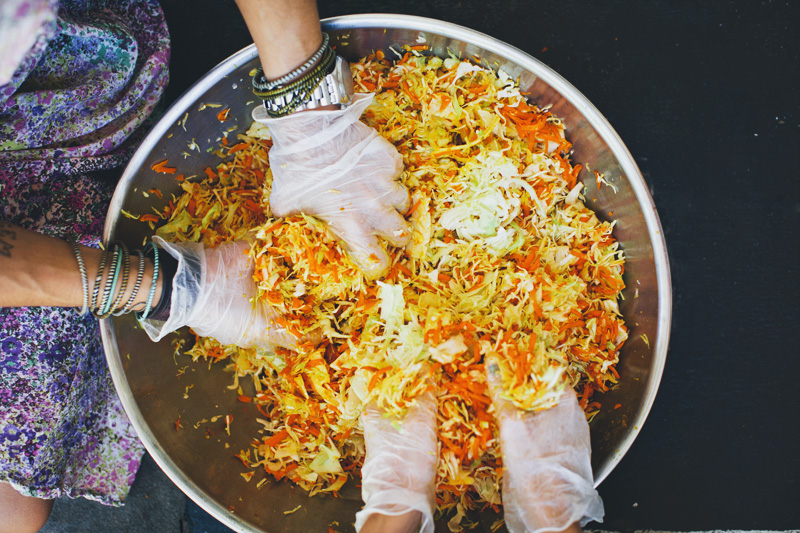
Today we are talking fermented vegetables. It’s one of the healthiest thing you can eat but the whole idea of food that needs 3 weeks before its ready, scares most people from even trying to prepare it. Right? But please folks, stay with us on this one. Not only are fermented/cultured vegetables on most top-lists of trendy food 2015, but a large spoonful of homemade Sauerkraut is also TRULY delicious on top of a salad or inside a sandwich. Furthermore, the natural occurring probiotics in fermented food are great for your stomach and body. The whole 3-weeks-to-prepare-issue is more like 20 minutes of active work and then 3 weeks of waiting. Best of all, we are going to show you the most natural way of doing it, without any starters at all. It’s called wild fermentation, only 2 ingredients are needed and the method has been around for hundreds of years. But you can also add a bunch of different flavourings to it, like caraway seeds, ginger, garlic, beetroot, chilli, fennel or turmeric. Does this project still sound impossible?
Here in Scandinavia, we have quite the tradition of pickling, preserving and fermenting. But weirdly enough, Luise’s and my interest for fermented vegetables actually sparked during our recent trip to Australia. Almost all the cafes we frequented had at least one salad or bowl that was topped with fermented vegetables or sauerkraut. And the health food stores there have whole isles with different brands of organic raw fermented/cultured vegetables. It didn’t take long until we were hooked. The flavours were just so fresh and the acidity added a real kick to whatever we paired it with. And in a strike of unbelievable luck, we met Vivianne on our potluck picnic in Sydney, she is one of the founders of Raw Sisterhood, a Bondi based company that makes incredibly tasty fermented vegetables, raw crackers and raw granola. She promised to teach us some of their secrets and now we get to share one of their recipes here. We made the first batch together in her house and we have continued making it now when we are home. They call this version Golden Goodness and it’s basically wild fermented cabbage and carrots flavoured with turmeric and garlic
Before we get on to the recipe, we wanted to let Brenda and Viv from Raw Sisterhood explain the magic behind Wild Fermentation and healthy bacterias:
Why wild fermentation: Wild fermentation is a natural process in which we provide the perfect environment for nature to do its thing, so no starter is needed. All fresh fruits and vegetables contain enzymes and bacteria (lacto bacilli) which allows them to break down (ripen). As fruits and veggies ripen they go through an enzymatic process, essentially they digest themselves. When foods go off or rot, they have been exposed to oxygen. In a wild ferment, we allow the vegetables to digest themselves, in an oxygen free environment. The lacto bacilli in the vegetables, eats the naturally occurring sugars and then produces lactic acid and more lacto bacilli….and the cycle continues.
Why eat healthy bacteria: Lactic acids can kill many strains of parasite and many other pathogens in the body purifying the intestines. Fermented veggies increase the healthy flora in the intestinal tract by creating the type of environment for them to flourish in. Increases nutrient values in the vegetables especially vitamin C. The high fiber content in cultured vegetables help to clean the digestive system, removing undigested food and unwanted toxins. Fermented foods also facilitate the break down and assimilation of proteins.
Golden Sauerkraut – Wild Fermented Cabbage, Carrot & Turmeric
Makes about 2 huge jars.
You can easily half this recipe if you prefer. Be sure to sterilise your jars before your start.
2 green cabbages (3 kg) Save some of the outer layers of the cabbage for packaging on the top
800 g / 7 cups carrots (6 medium size carrots) or beetroot
15 g / 1,5 tbsp grated ginger
15 g / 1,5 tbsp minced garlic
15 g / 1 tbsp fresh grated turmeric (optional)
30 g / 3 tbsp ground turmeric
5 g / 1 tbsp caraway seeds
5 g / 1 tbsp fennel seeds
2 tbsp / 30 g himalayan sea salt (optional, you can do it without salt, but it speeds up the process)
Wash the cabbage and scrub the carrots, then finely slice the cabbage and grate the carrots. Or use a food processor with a fine slicer attachment for the cabbage and rough grating attachment for the carrots. Place all ingredients in large mixing bowl. Use your hands (you might want to wear rubber gloves to prevent your hands to get stained by the turmeric) to mix and massage until it starts to get soft and juicy. The vegetables should release quite a lot of juice, if not, just add some more salt. Use a spoon or a tong to spoon the mixture into 2 large clean jars. Pack it really tight to leave out all air, keep packing until the jar is full of veggies and the veggies are covered in juice (important). Leave some space at the top to place a whole folded cabbage leave on top, this is to prevent any oxidation. Close with an air-tight lid. During the fermentation process the veggies will expand and the liquid will try to come out, we put our jars in a bowl or a plastic bag for any juice that might drip from the sides. Leave the jars to ferment in room temperature for 2-4 weeks (depending on room temperature), 3 weeks is usually perfect. When ready, it should be softly textured but not mushy and have a fresh, spicy and acidic flavour. Discard the cabbage leave at the top and store the jars in the fridge. We usually divide the fermented vegetables in smaller jars and hand out to friends and family or keep it in the fridge.
Tip:
• If your veggies are stinky and leaky, then place the jars in a bowl and place everything in a plastic bag and close it. Then place in a cupboard and drain the water after about 3 days.
• If the top is discolored or has a bit mould, don’t be alarmed just remove it and wipe around or just change the jars.
• Use organic vegetables for fermenting and don’t wash or scrub to much, it can destroy the natural enzymes on the vegetables.
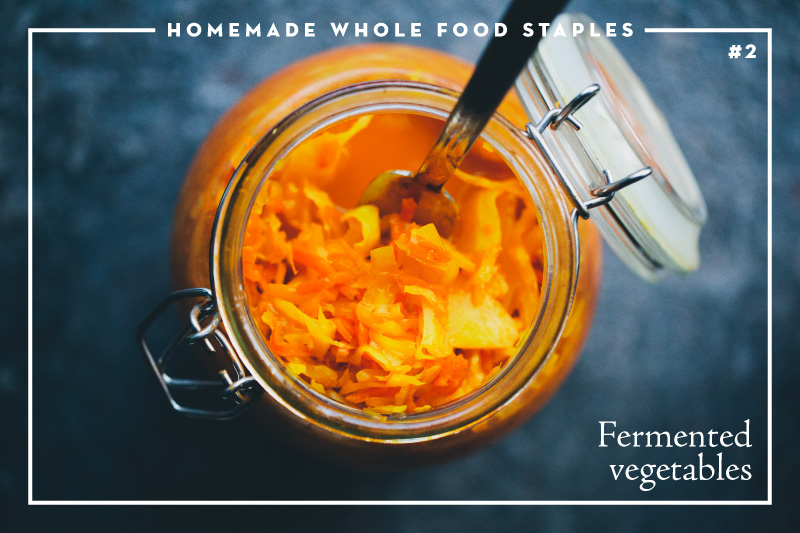
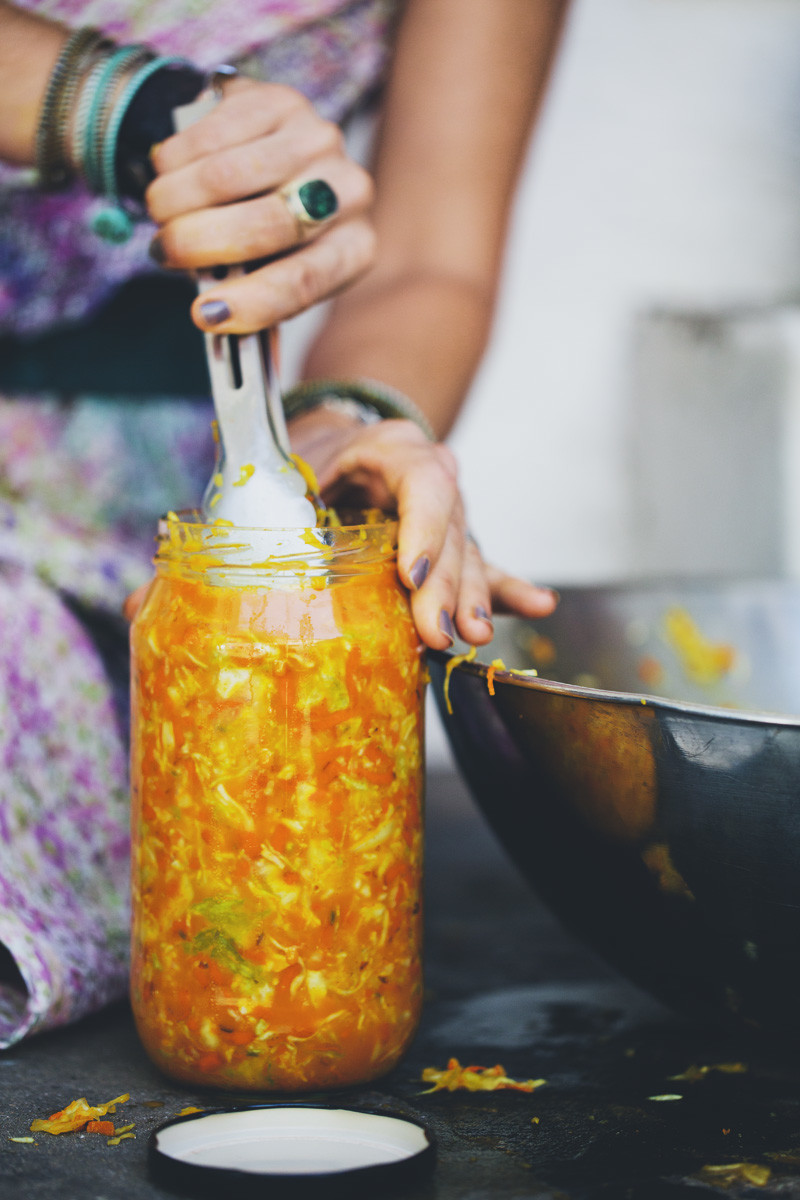
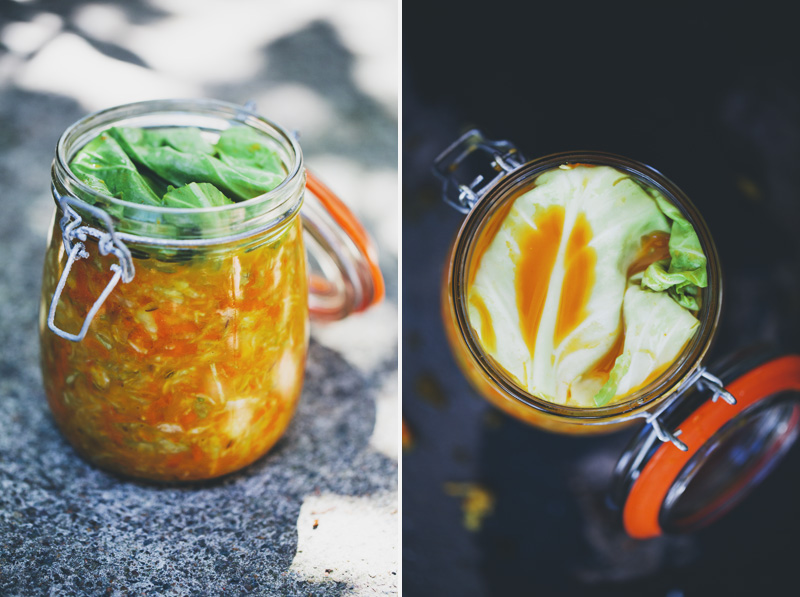
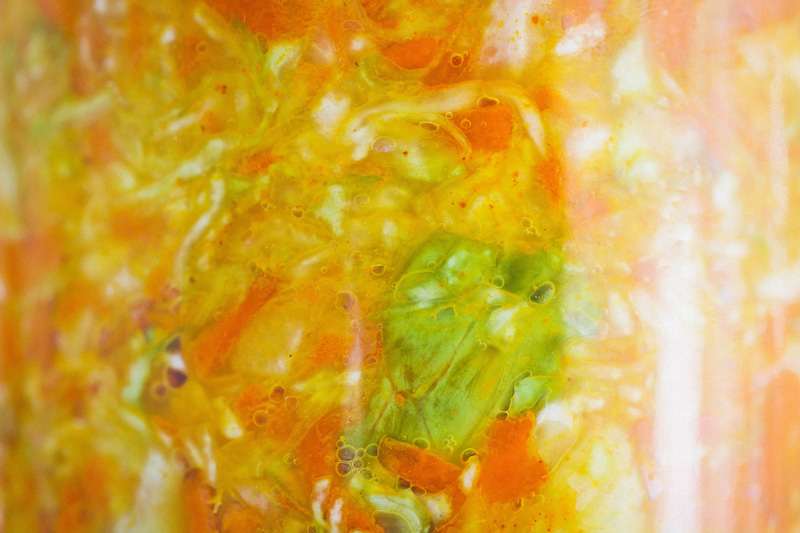
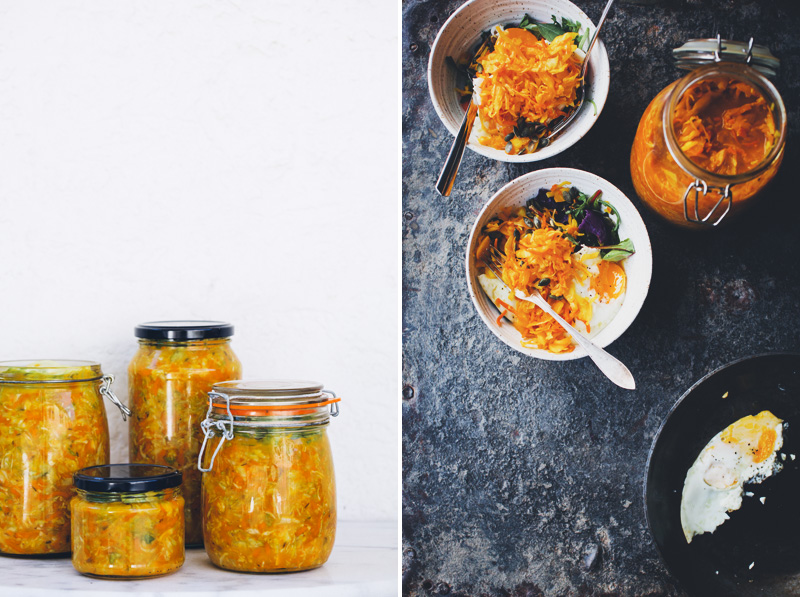
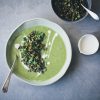

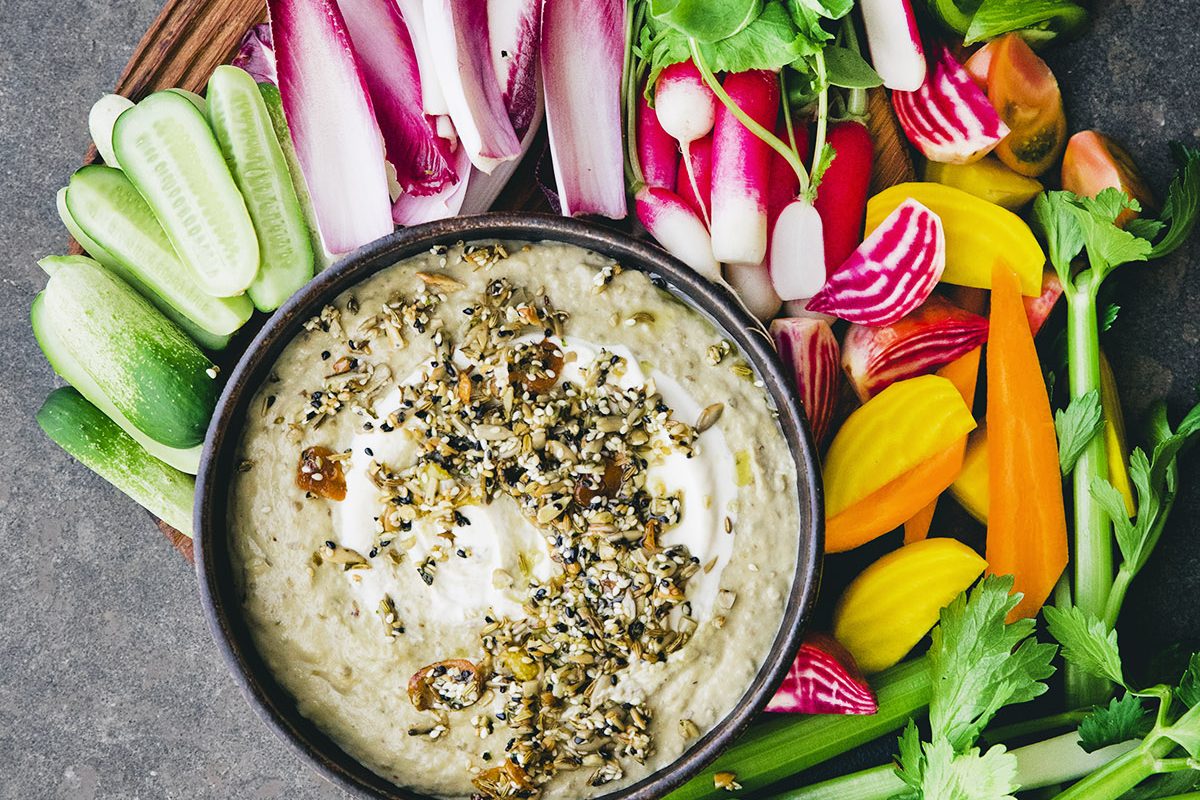
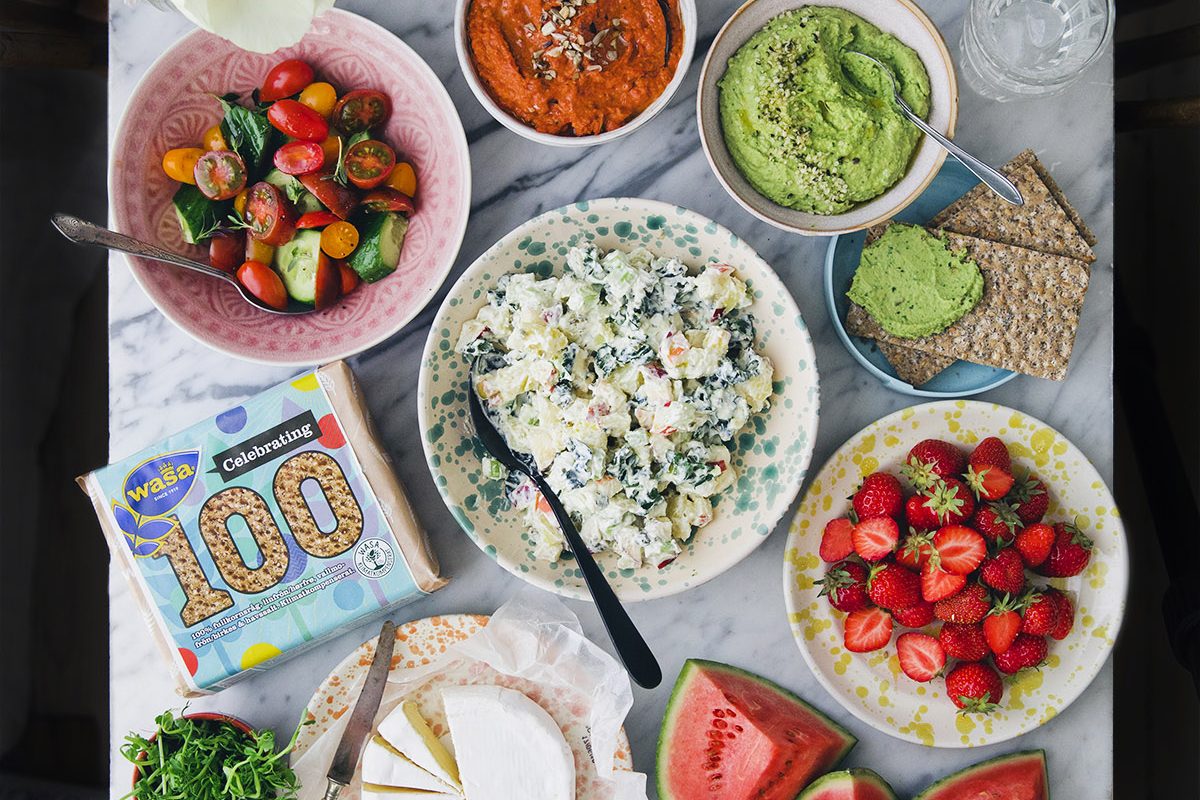
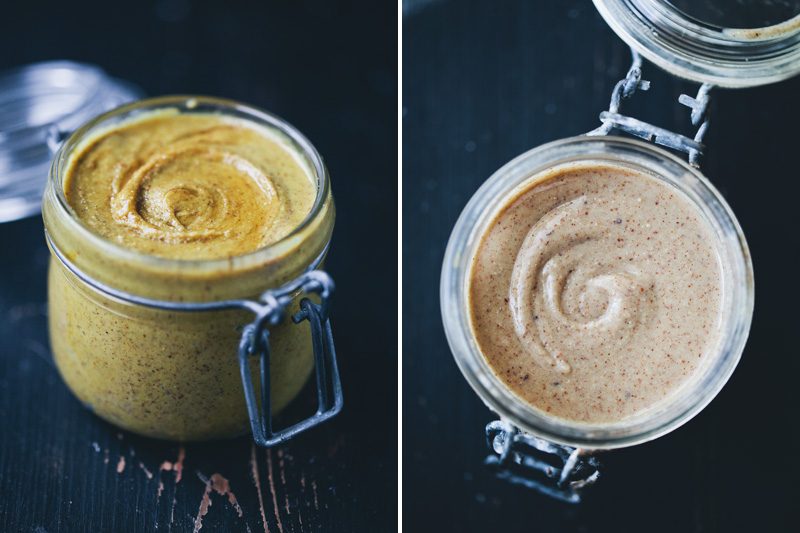
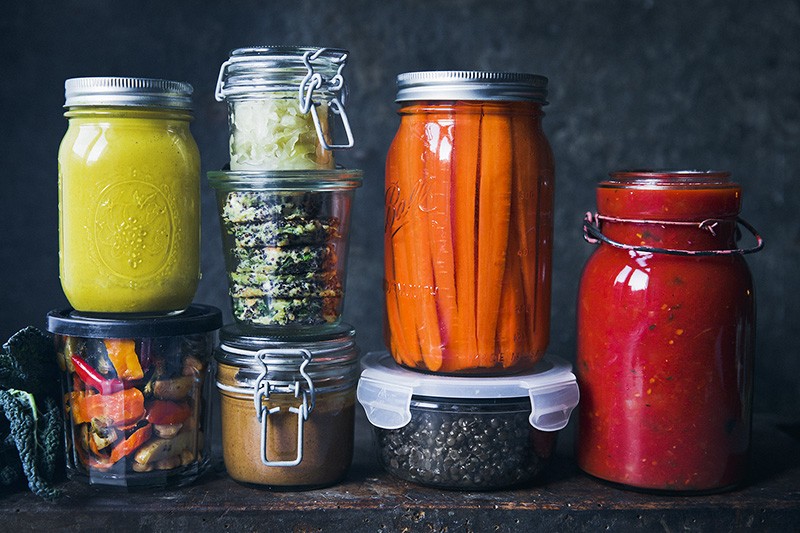
119 Comments